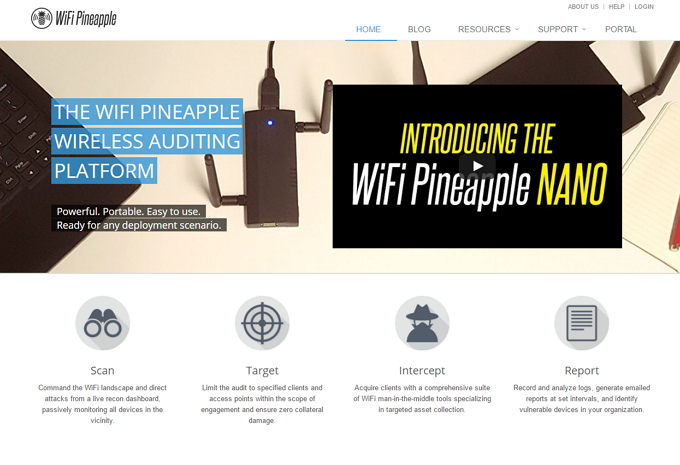When we think of a pineapple, we envision a sweet, yellow fruit, but the Wi-Fi Pineapple device is something entirely different. The pocket-sized piece of hardware most closely mirrors a Wi-Fi Access Point and was designed for network penetration testing but can be re-purposed to perform man-in-the-middle breaches. If an attacker releases the Wi-Fi Pineapple in a public setting, you may remain vulnerable even if you take the appropriate steps to secure yourself.

The device is often used for pen testing, which is an authorized attack of a system as a method to find vulnerabilities and part of a larger branch known as ethical hacking.
Standard pen testing requires using specialized software and operating systems, such as Kali Linux. However, the Wi-Fi Pineapple decreases the technical skill needed to perform the tests. It comes with an easy-to-use UI that significantly simplifies the process. Additionally, it’s equipped with a secondary app for Android that lets you download updates and set up the device.
The Wi-Fi Pineapple operates similarly to a hotspot to get credible users to connect to the device. Ever notice that when you leave your phone’s Wi-Fi turned on, and you get home, it automatically connects to your home network? The Pineapple achieves the autoconnect feature to trick devices to comply. When you use a network SSID recognized by your phone, it intercepts the automatic connection as a man-in-the-middle attack.
The Pineapple device is typically connected to the true Wi-Fi network so an internet connection is still present even if you are unaware. However, it can also be used to trick Wi-Fi networks that the tester doesn’t have access to. The Pineapple uses the target network SSID and a USB modem to connect to the internet.

When we think of a man-in-the-middle (MITM) attack, we think of a malicious hacker placing himself between us and the internet. Typically, they eavesdrop and listen in on your communications with other websites. By being placed between your connection, the attacker is able to view all the data you plan to send to the internet. Even if the site uses HTTPS, the attacker could still trick the real website by offering you a fake one and stealing your data.
Because the Wi-Fi Pineapple is so easy to use, it makes it more accessible to a group of hackers. The Pineapple could use a MITM to perform phishing attacks by passing your data through the device, leaving it vulnerable to theft. This can include passwords, emails, and other confidential information. The attacker could perform the attack while not even being in the same area as the Pineapple and do so remotely over the internet.
So how can you protect yourself? For starters, be sure to always use a VPN when connecting to public Wi-Fi. When you encrypt your traffic with the VPN, you bypass the Wi-Fi Pineapple’s data collection. You should also turn Wi-Fi off when you aren’t using it in order to avoid the known network exploit, which can prevent advertisers and companies from tracking you around the world. To avoid being the victim of a phishing attack, check for HTTPS. It’s also critical not to ignore website warnings because they are a sign that something may be off. And if you do use a public Wi-Fi network without a VPN, avoid visiting sensitive websites like online stores or banking.
Source: MakeUseOf
Advertisement
Learn more about Electronic Products Magazine





